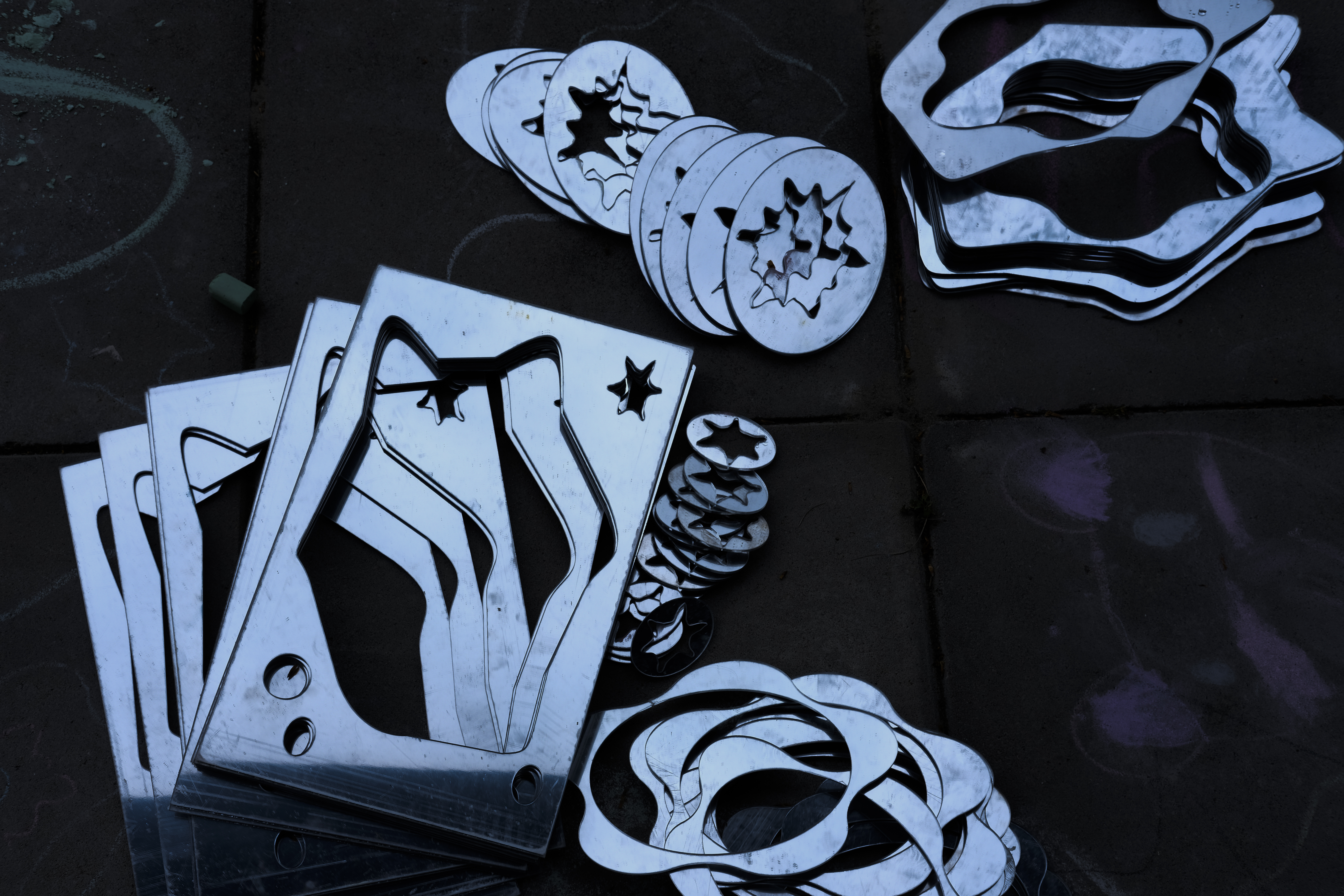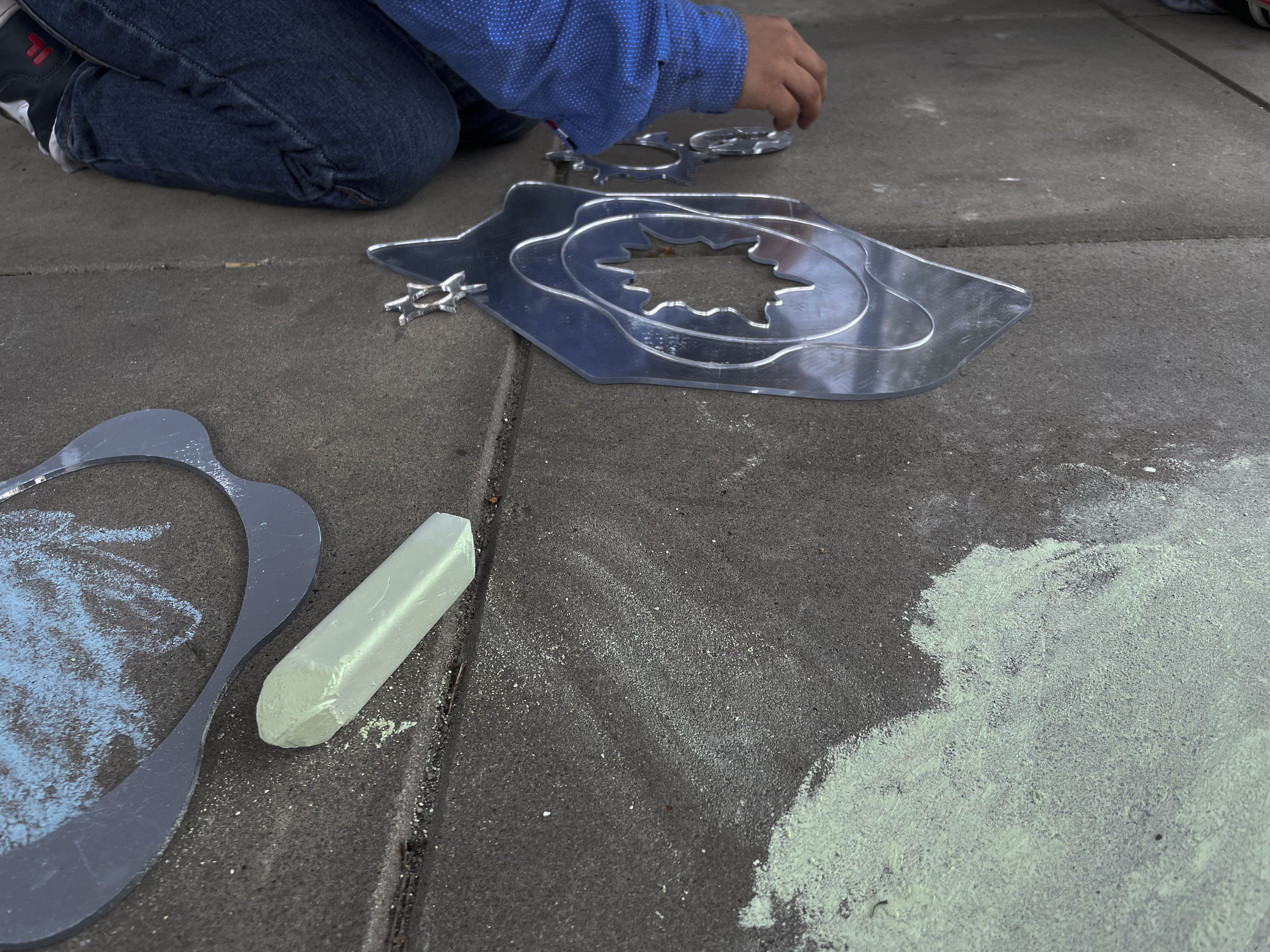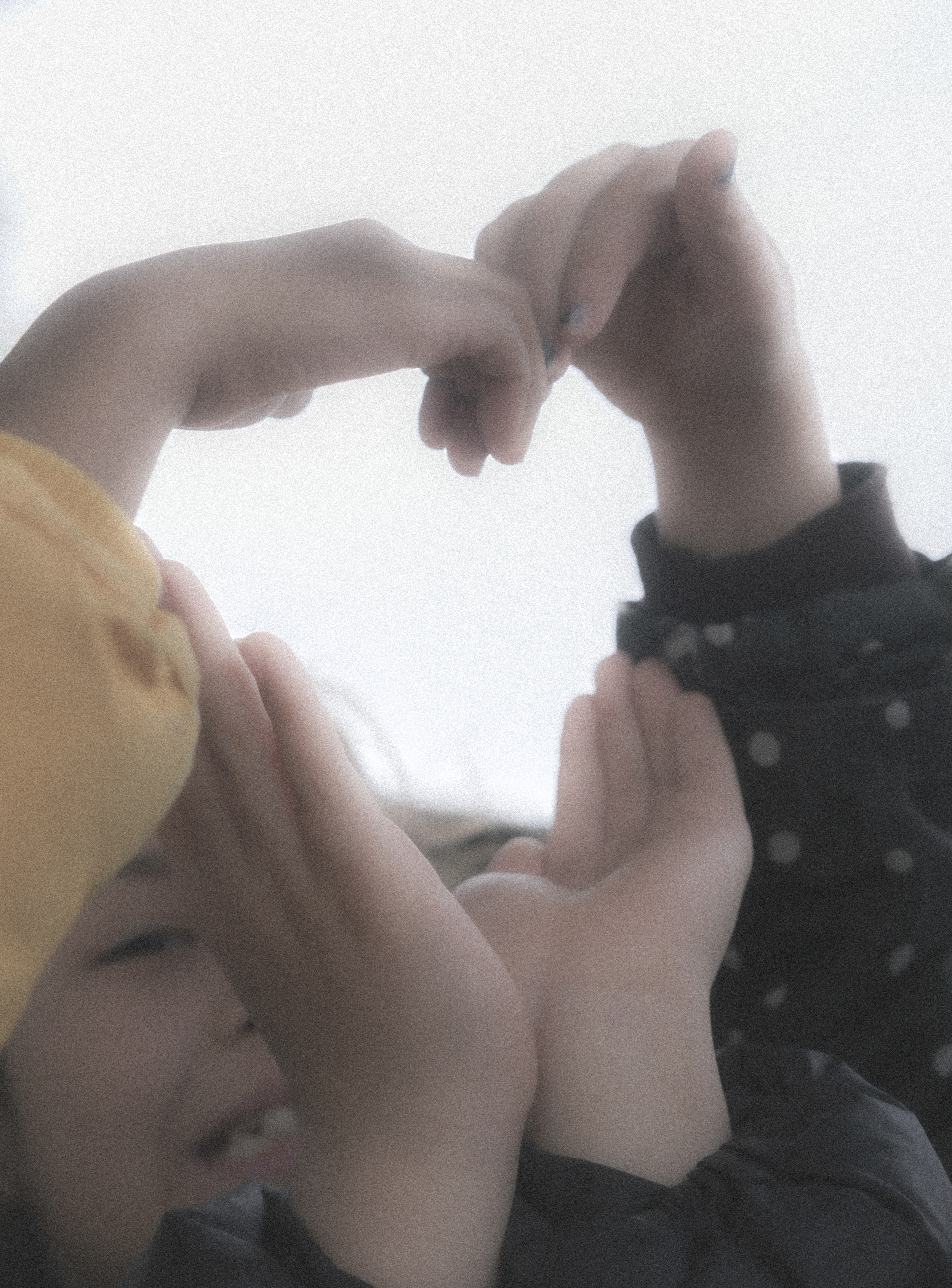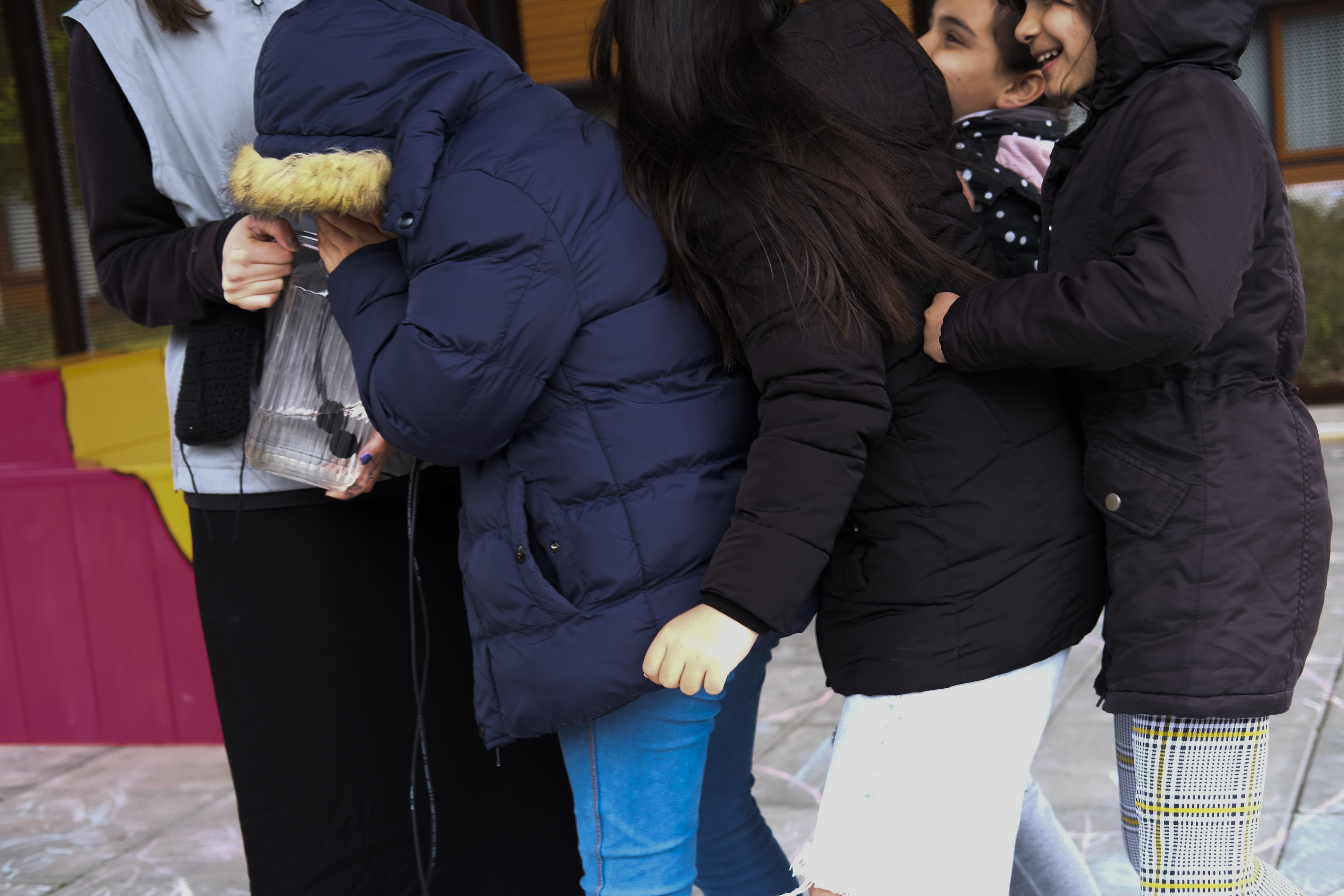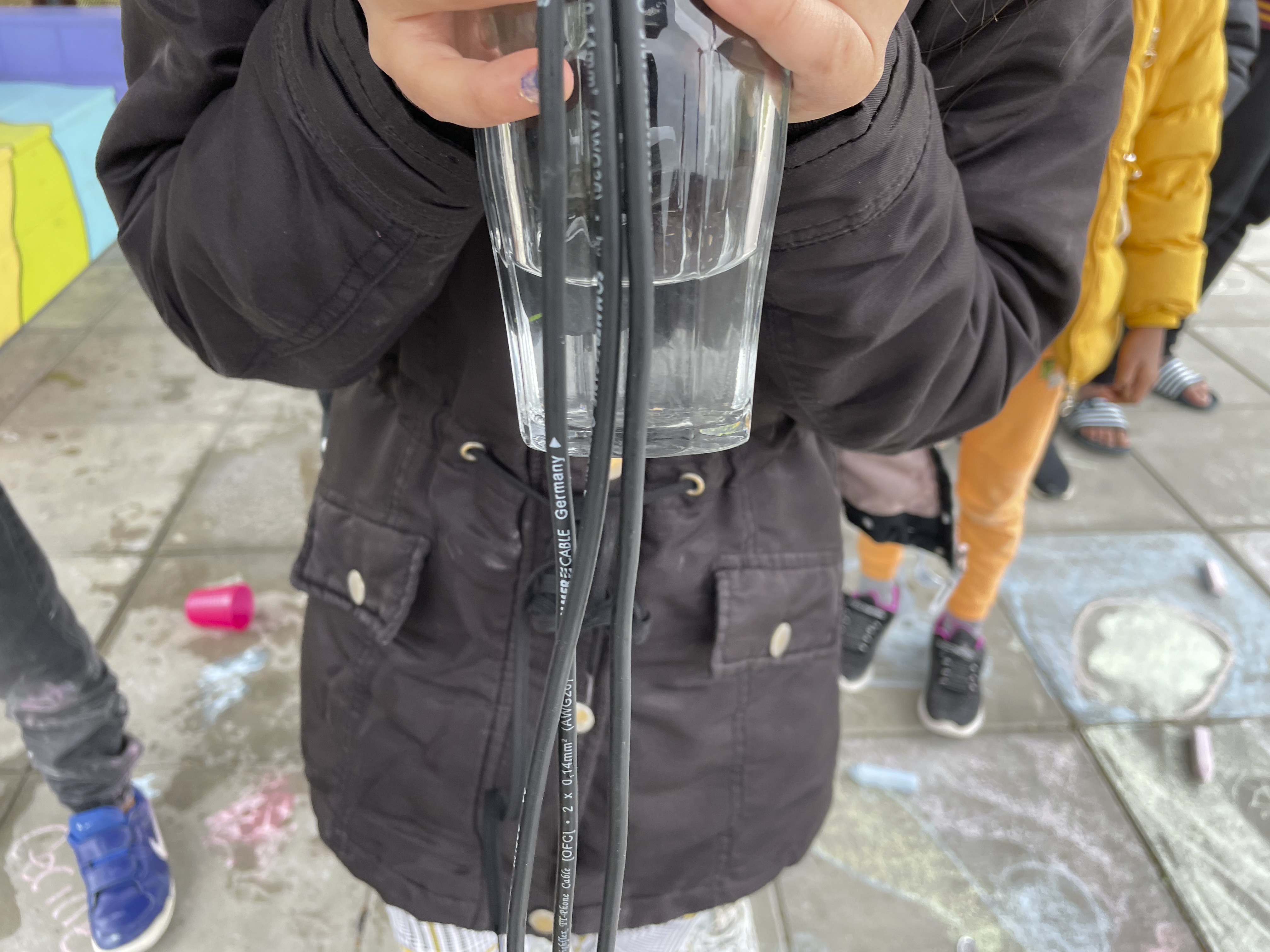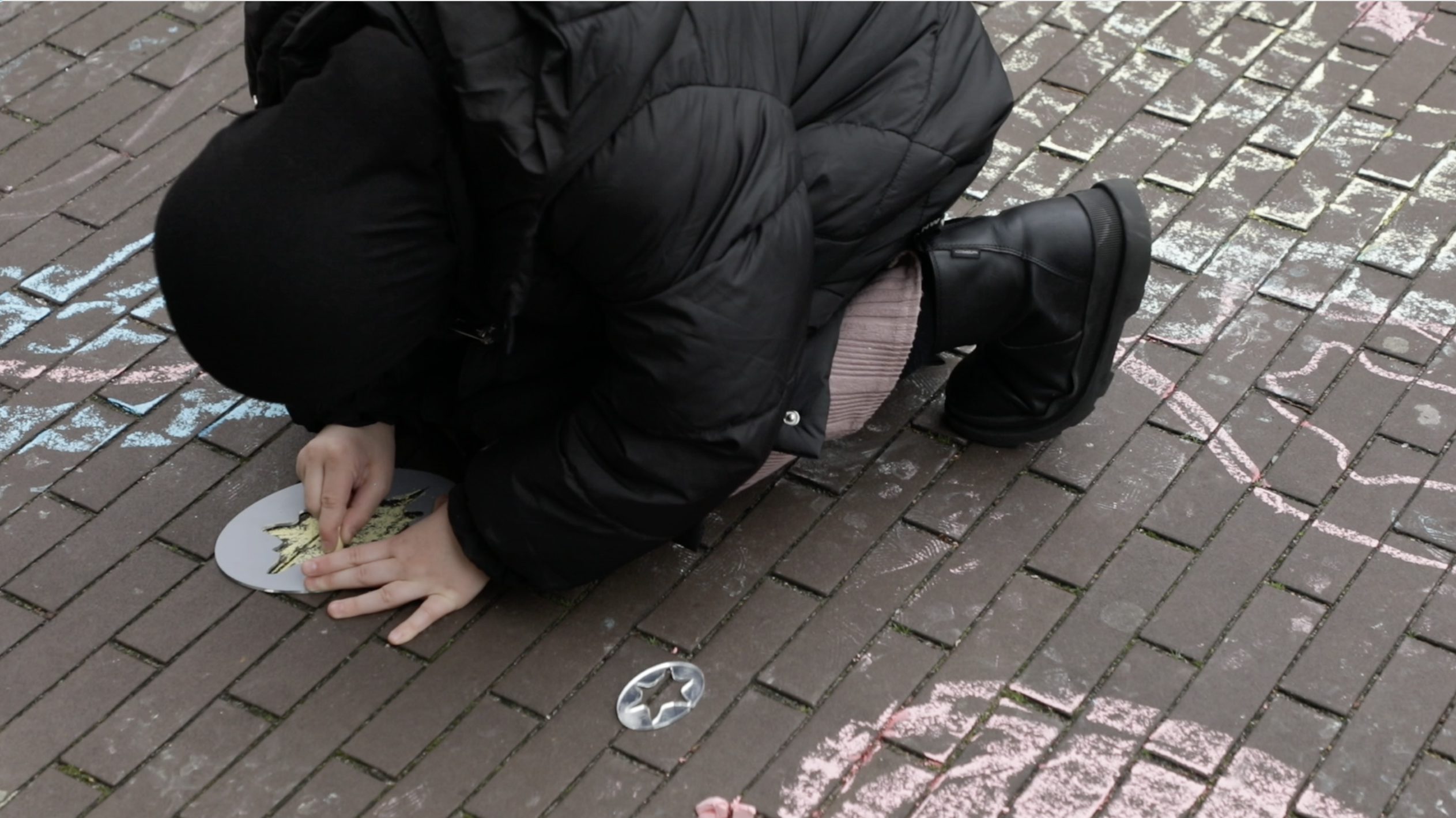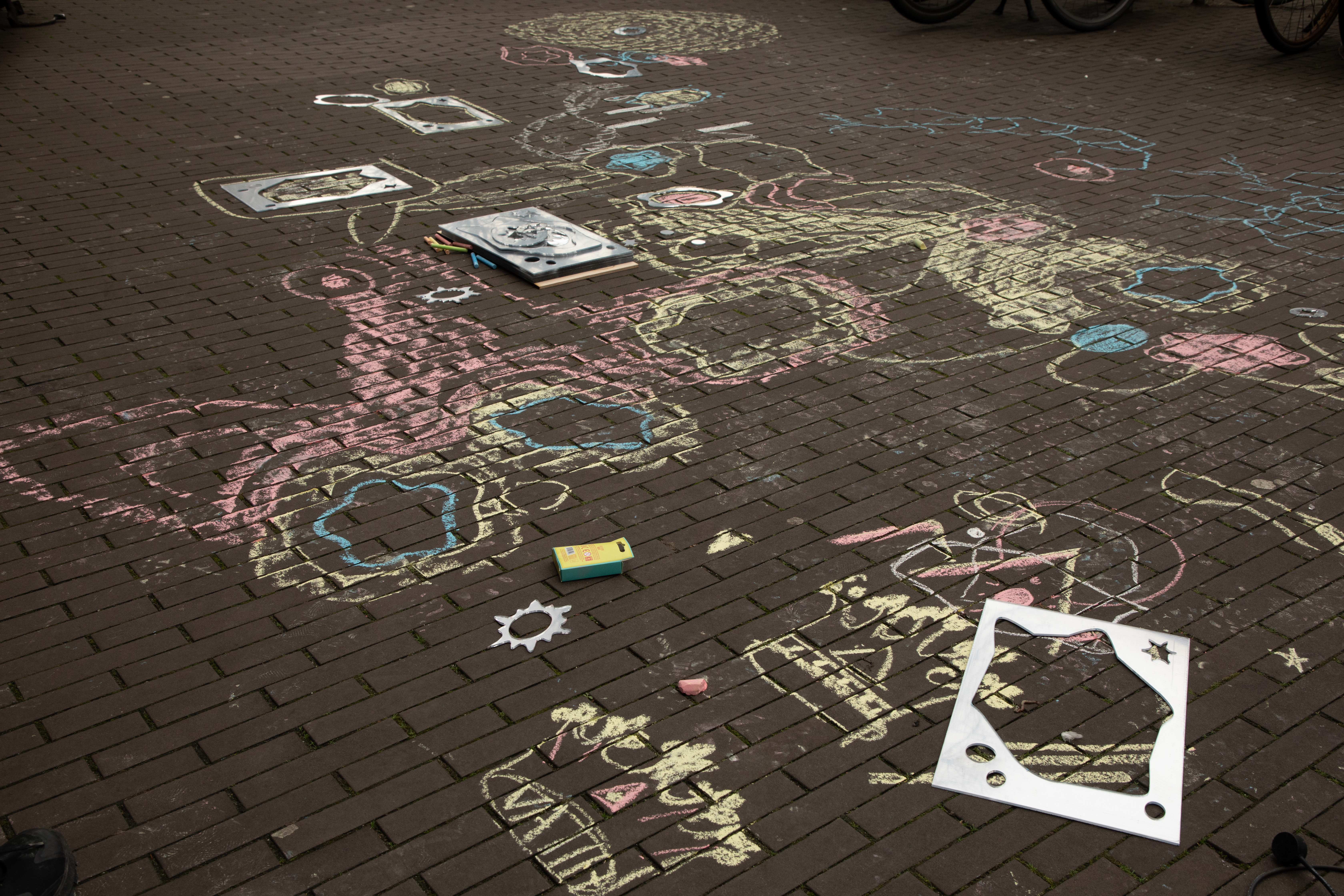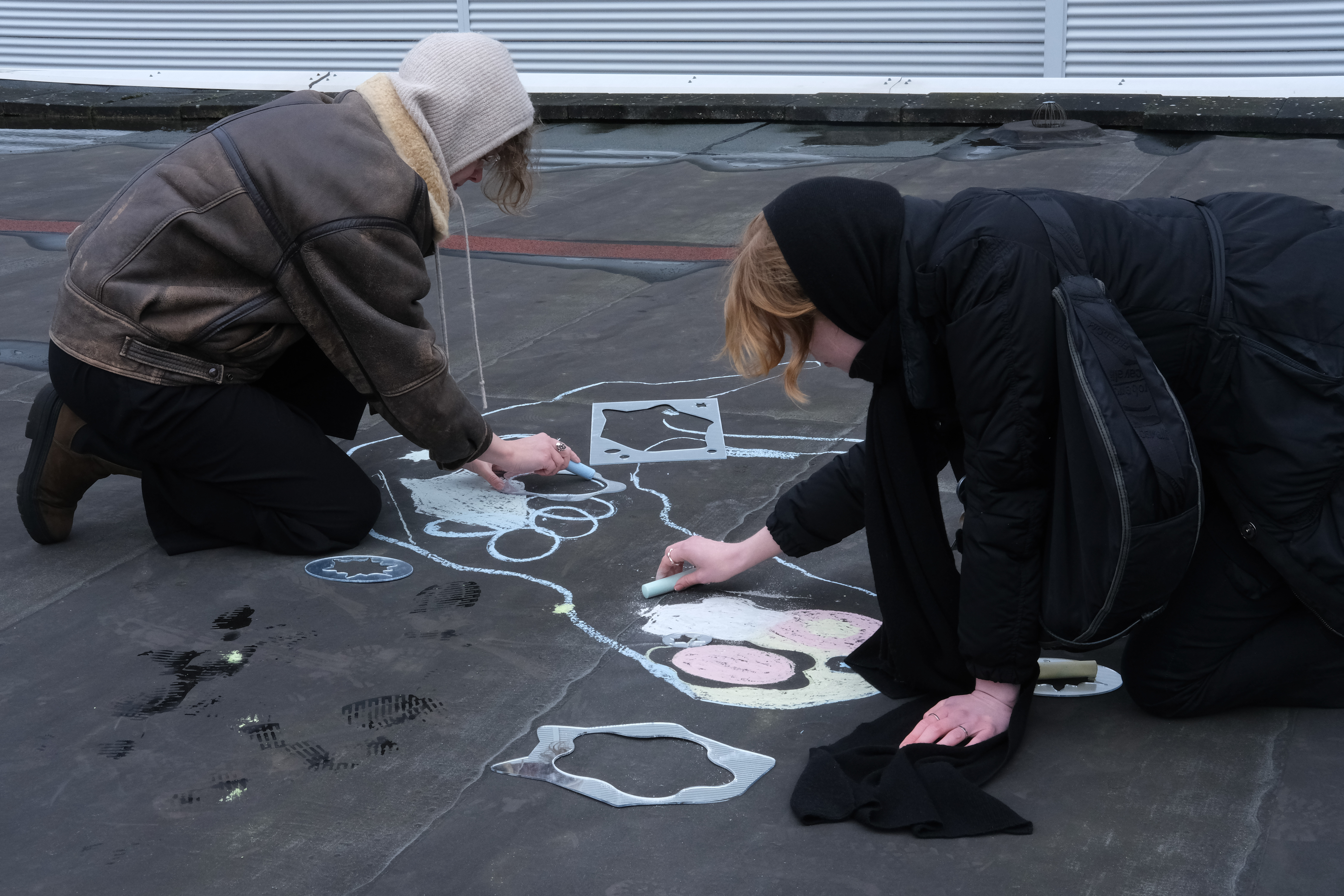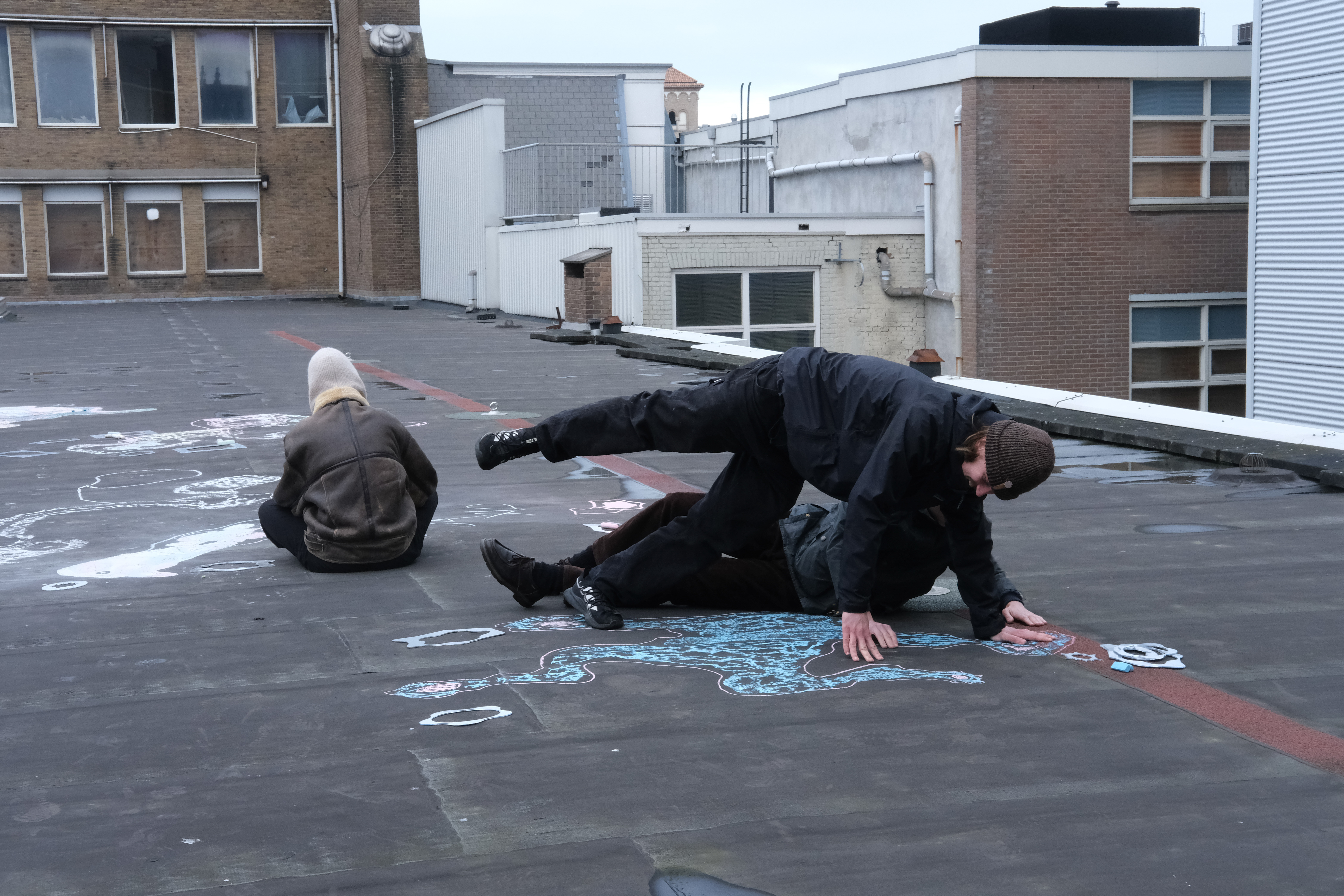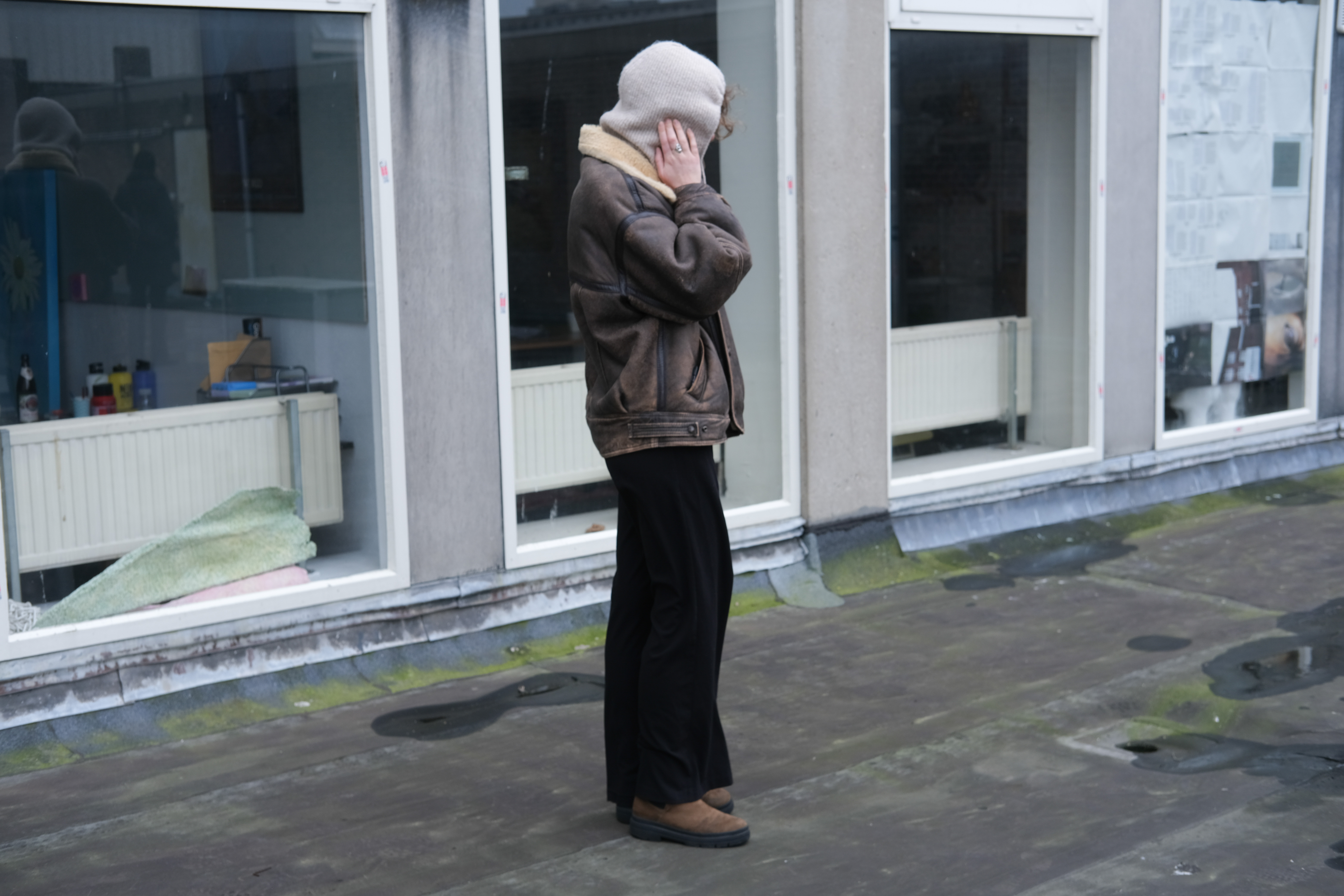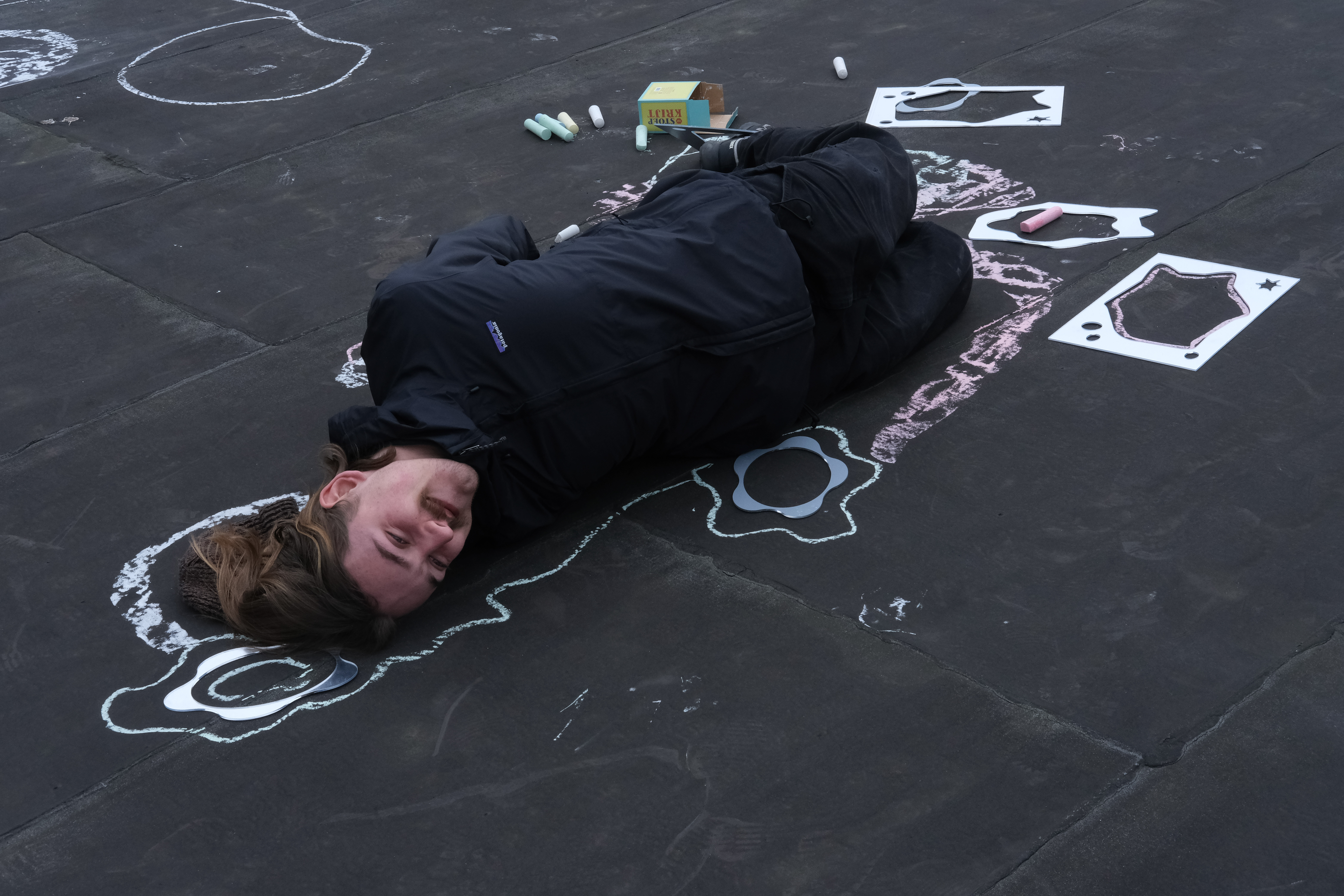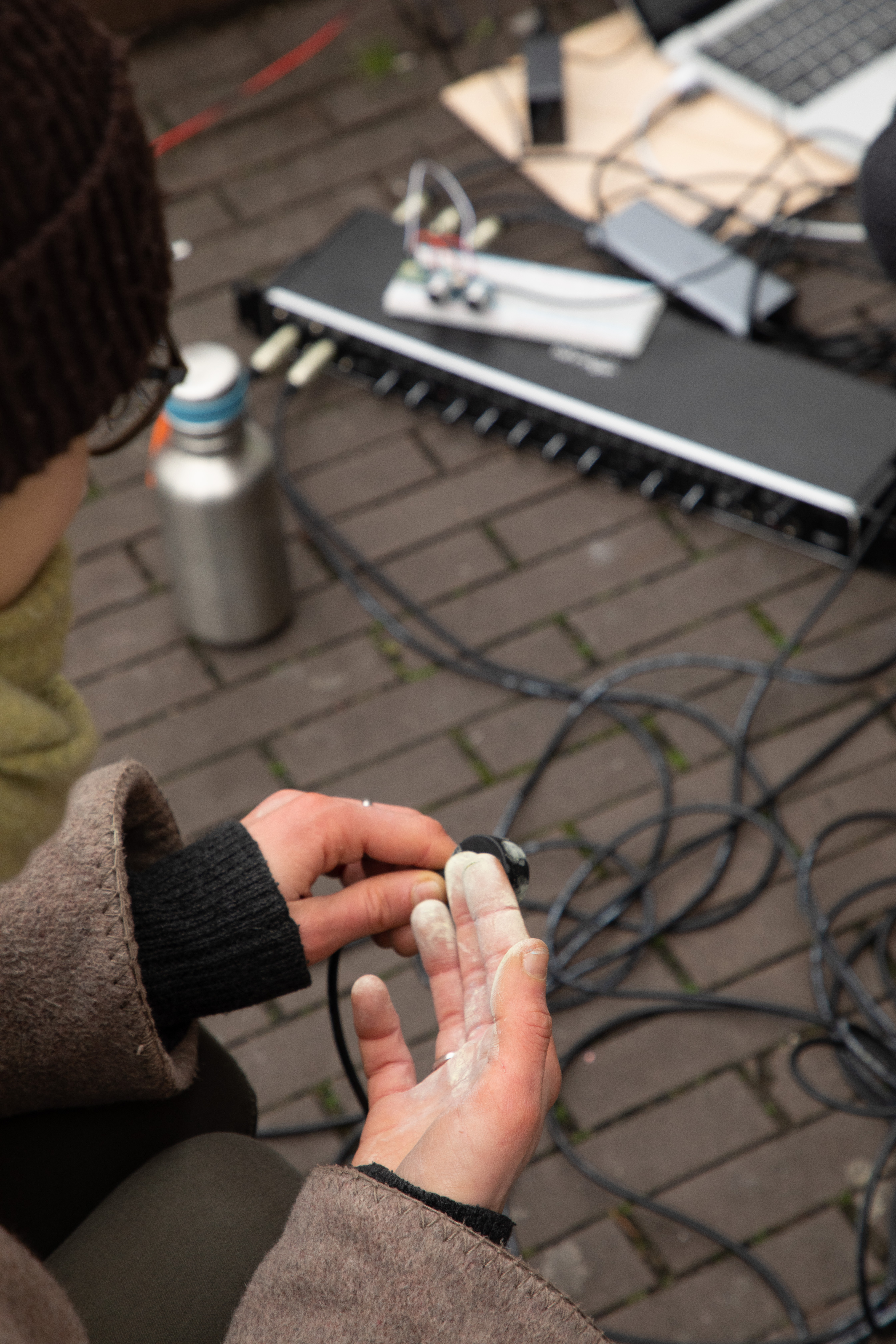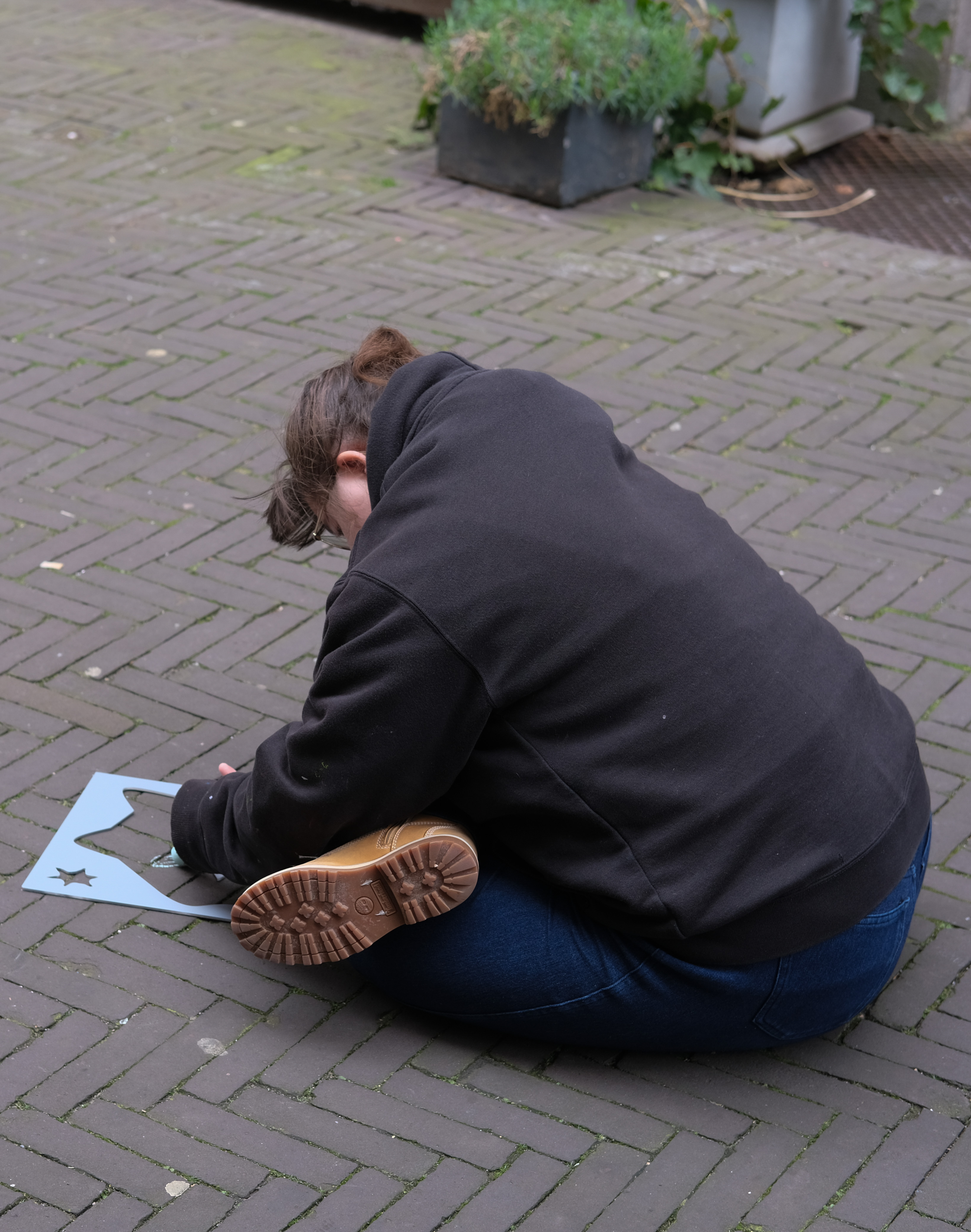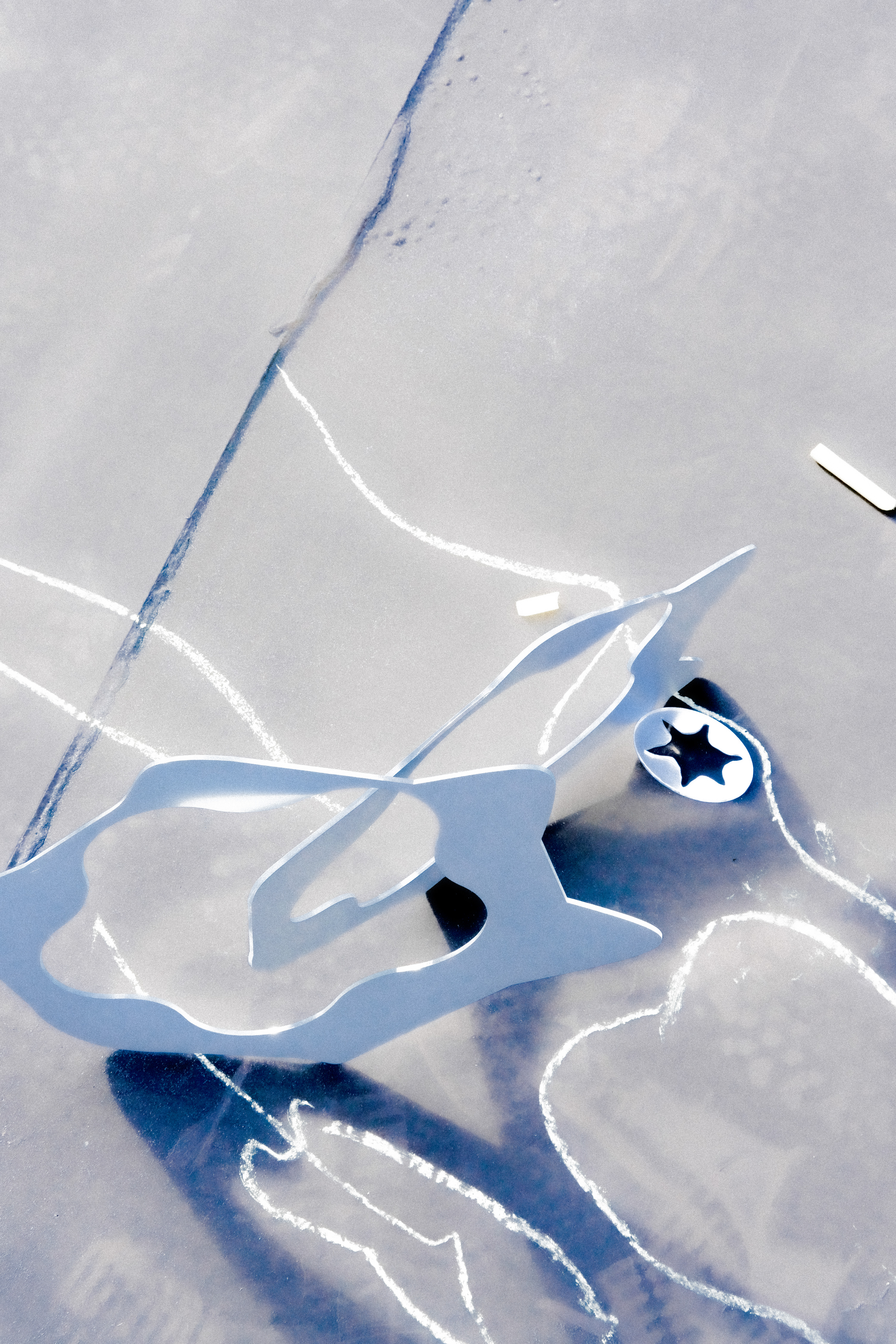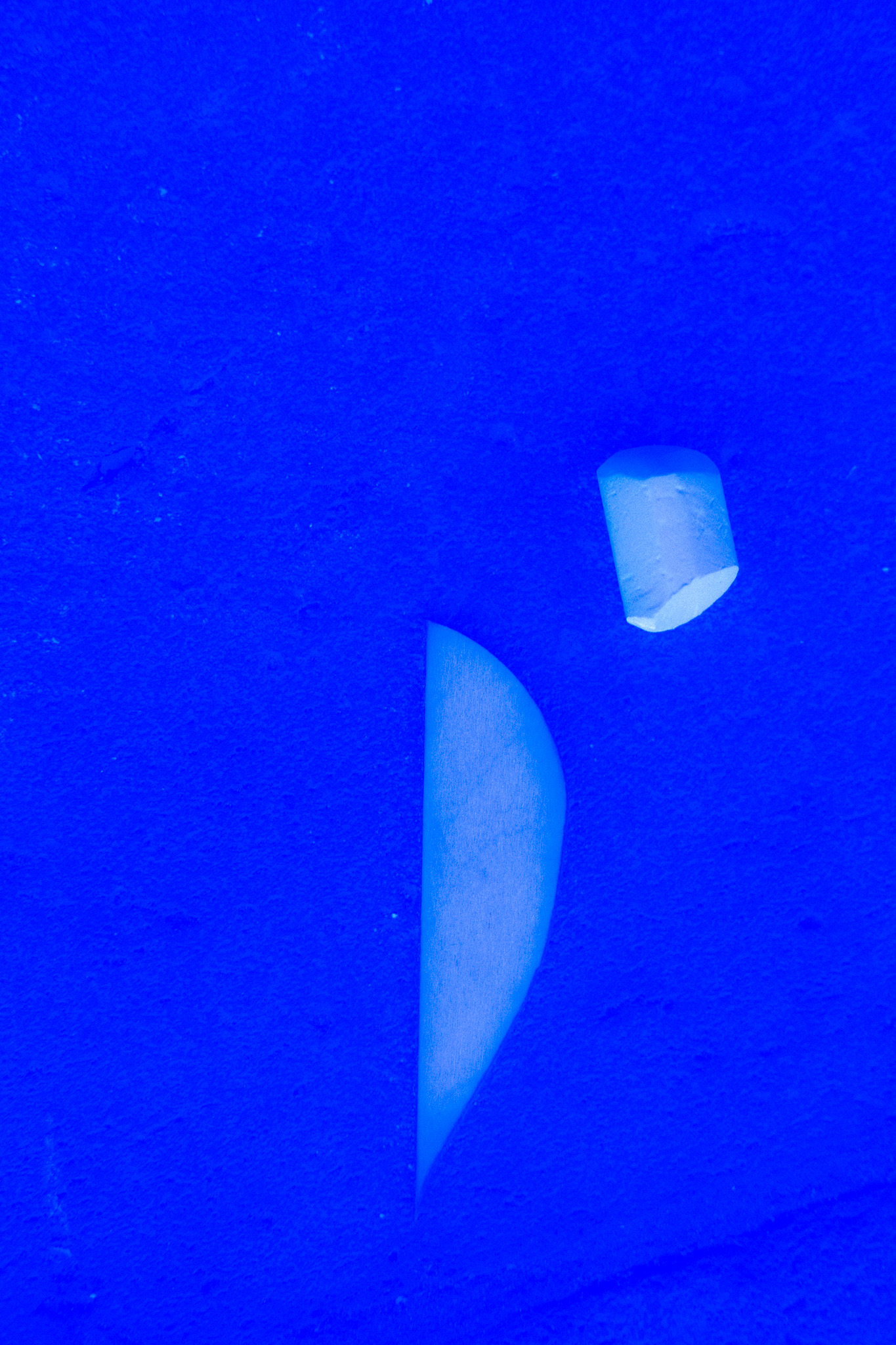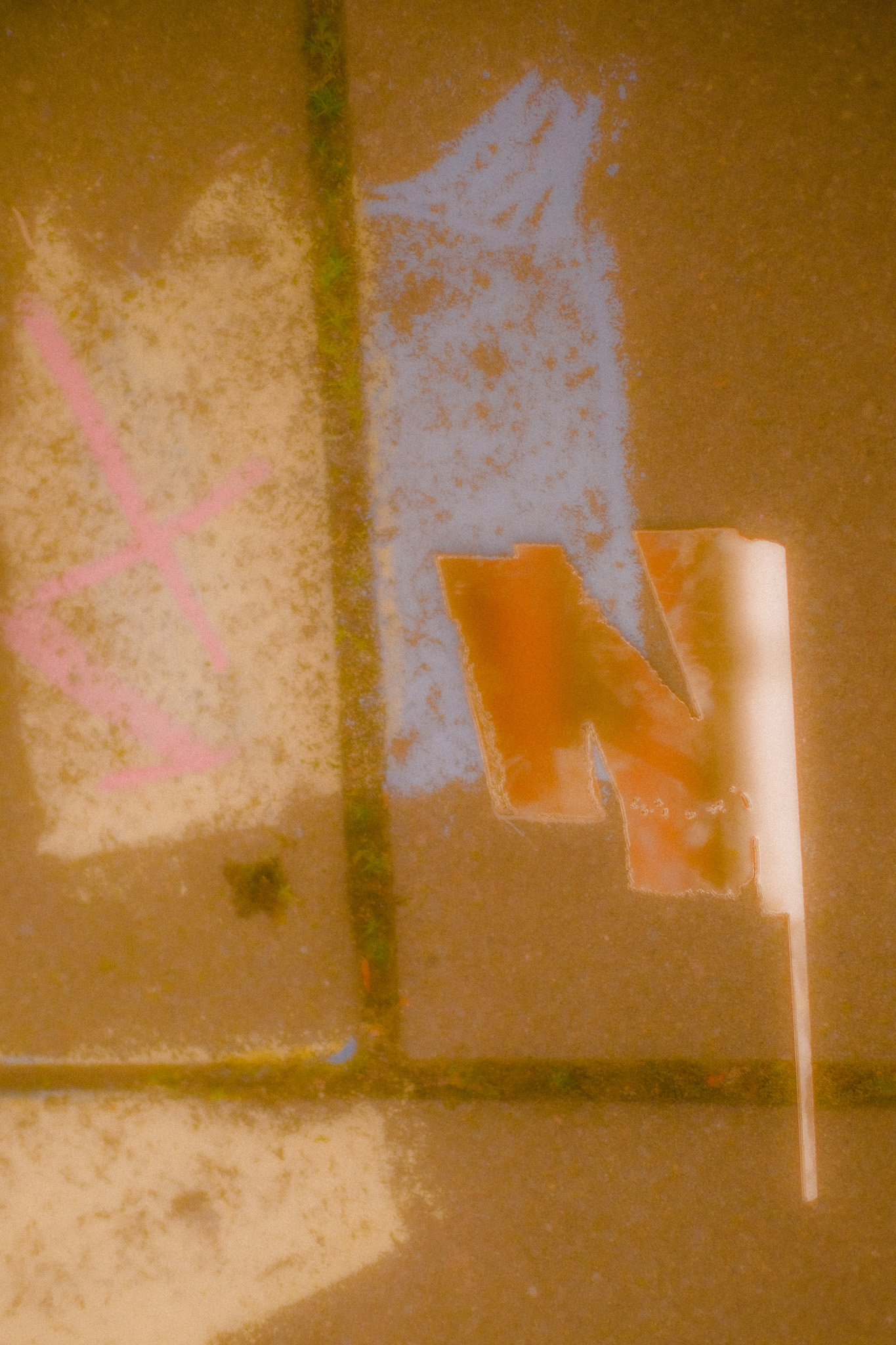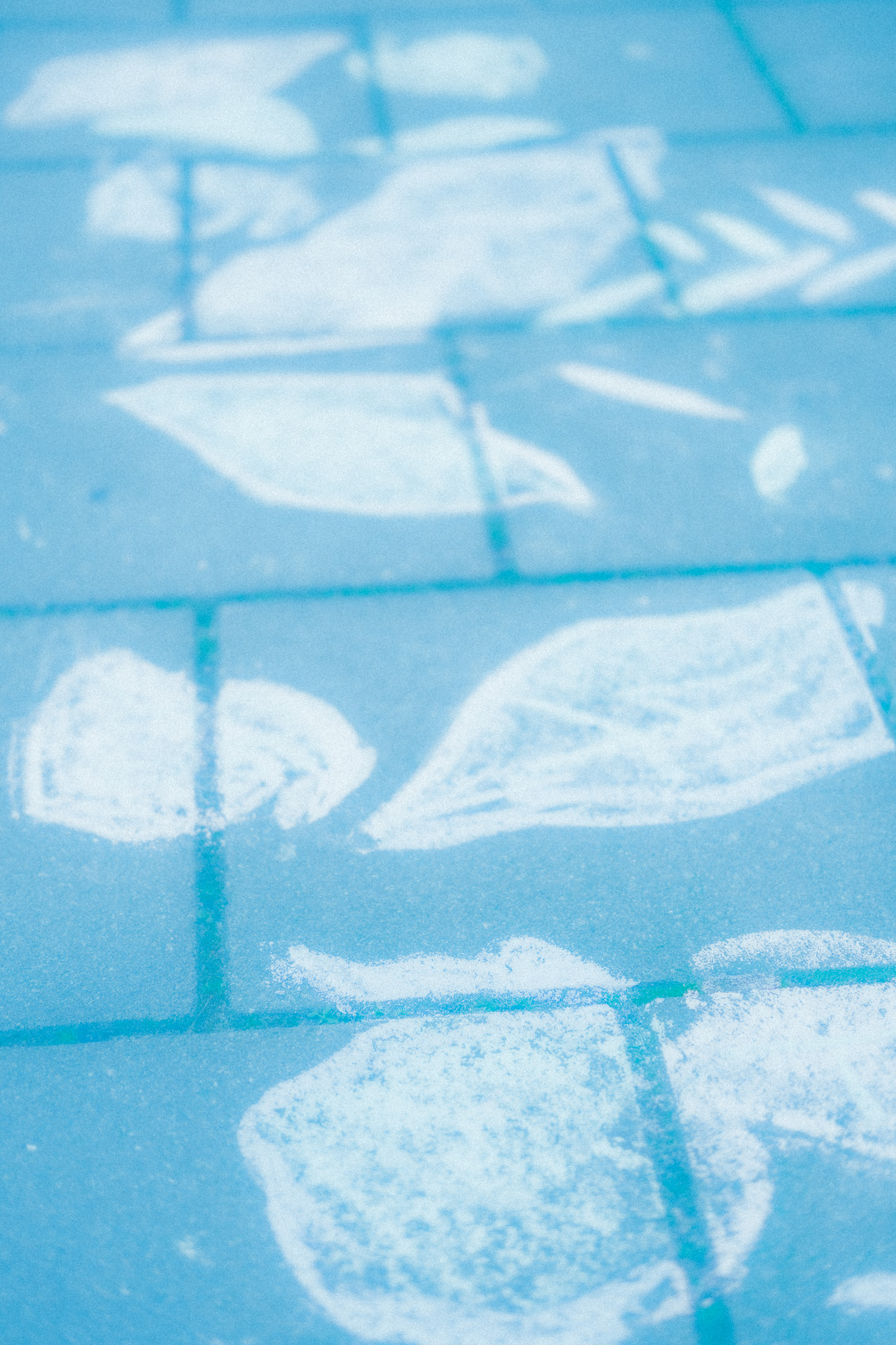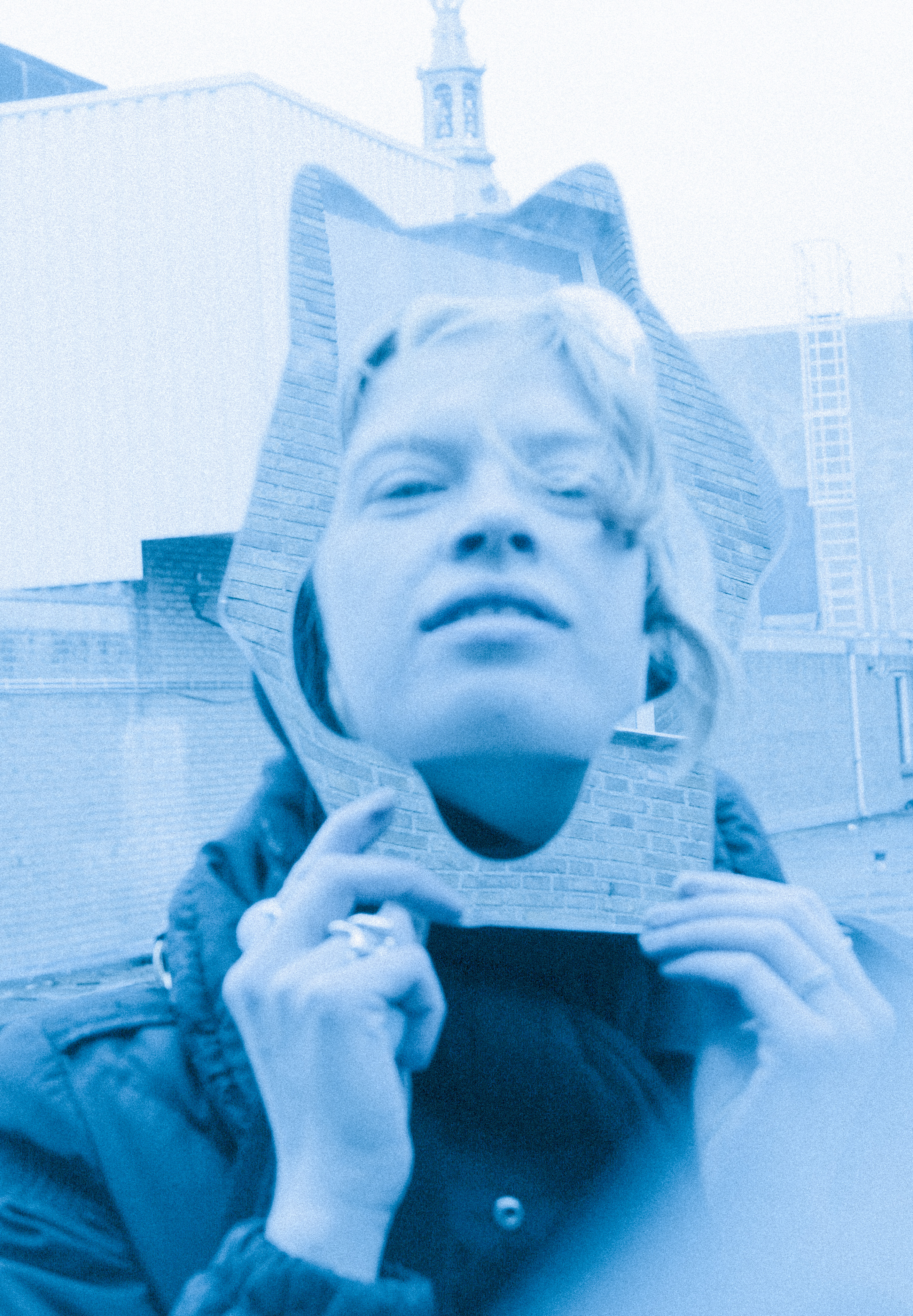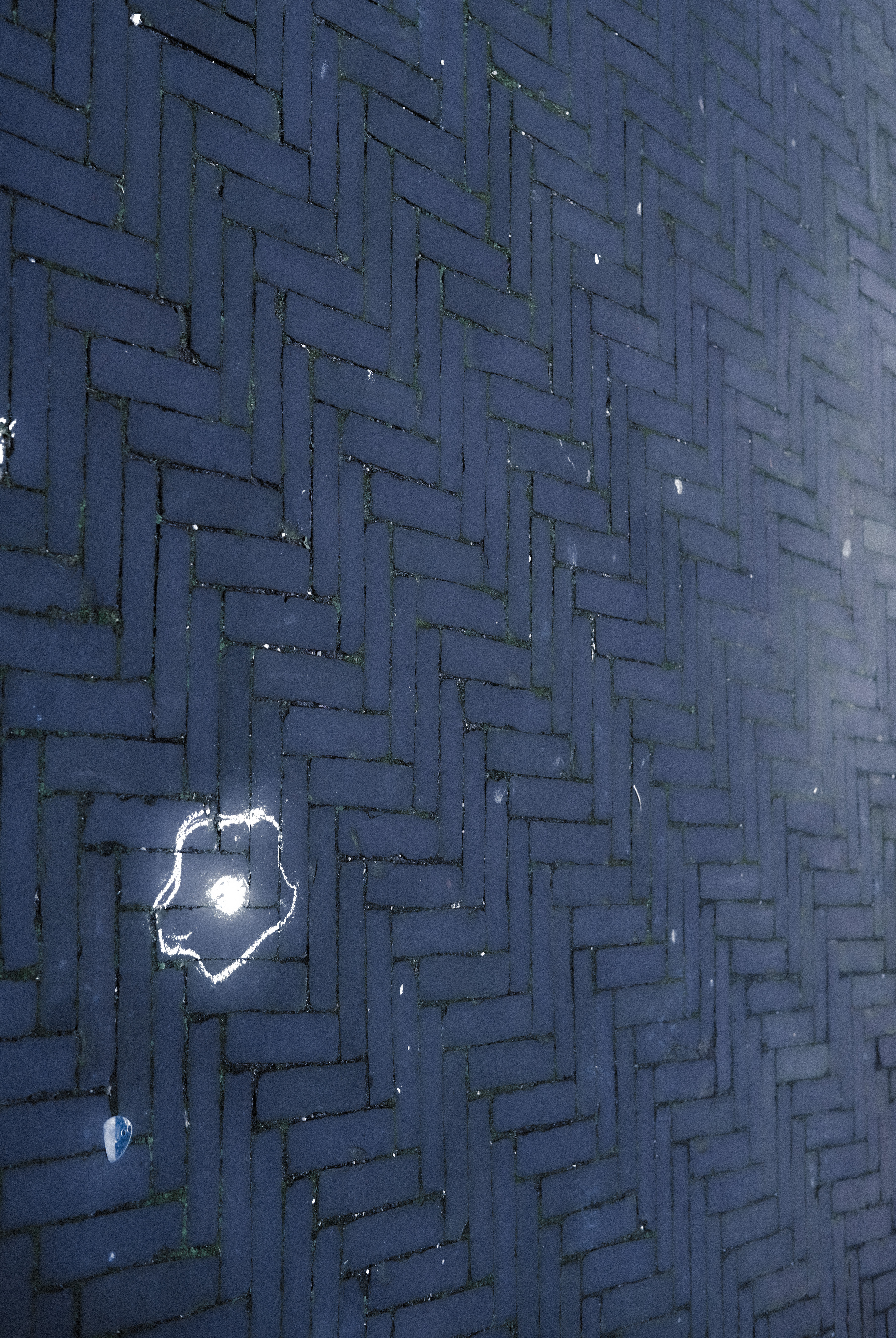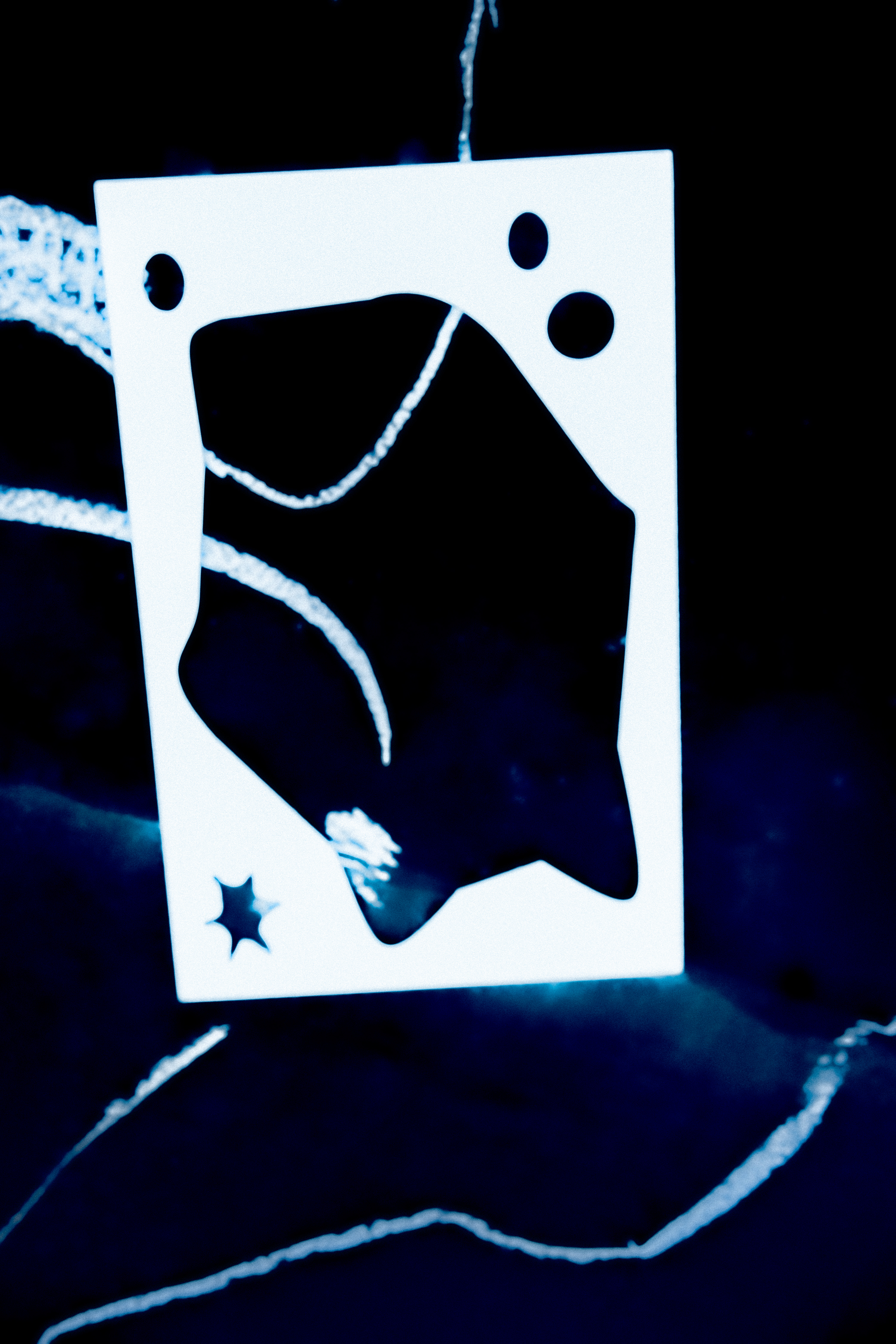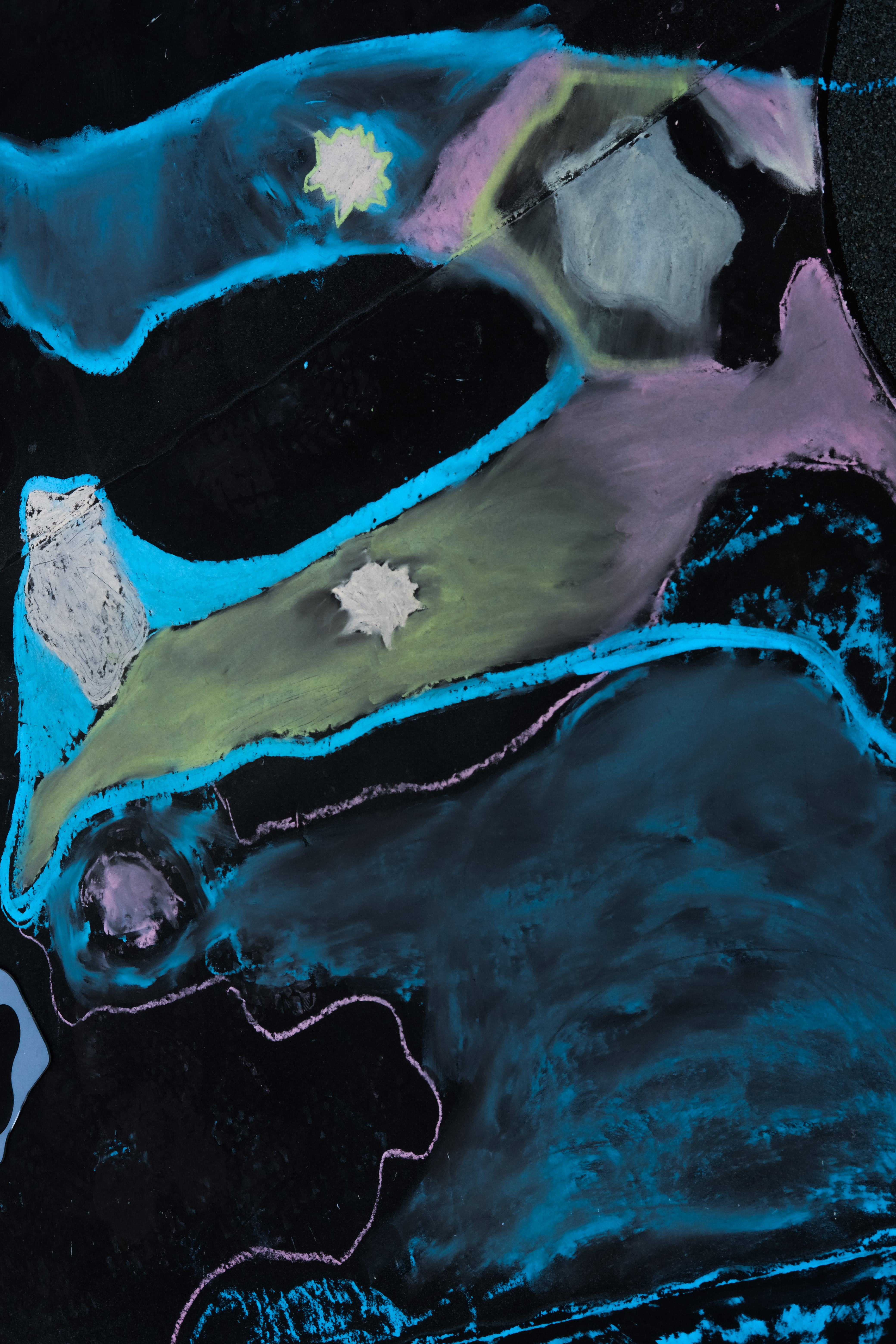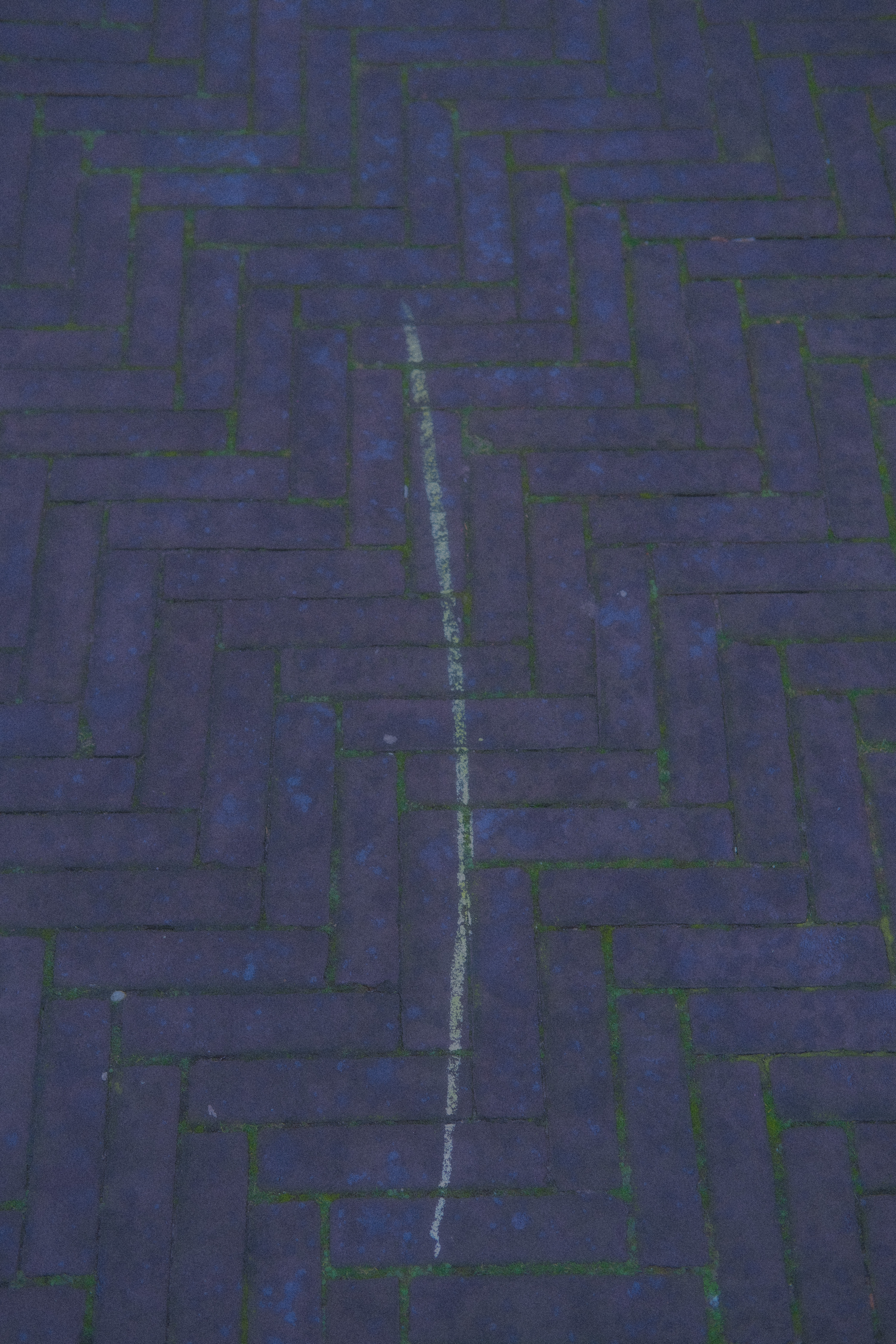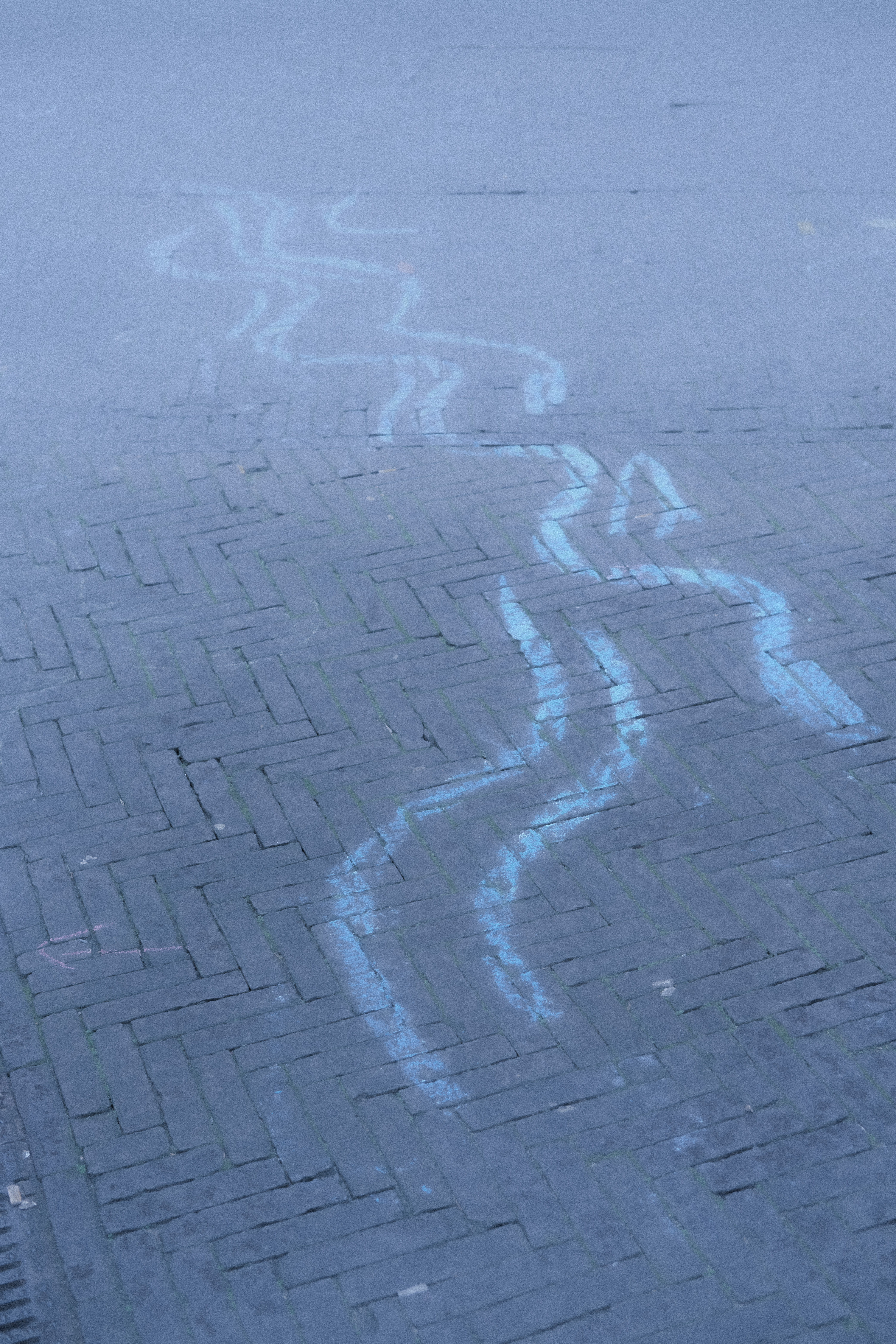Workshops
The act of drawing and listening is a binding agent between participants, organs of the re-defined institution, where sharing a common
goal of slowing down in public space enables de-hierarchisation of senses. By working against power structures imposing importance
and functionality on a sensorial level, the workshop becomes a hybrid model where roles are undefined and unspecified, it is a flux of
individual exchange in collectively held place. The natural care exist between organs of institutions as each is welcomed in their own
capacity to give and receive.
Entering a flow
Using stencils serves as a method that can welcome broader public into the workshop as it offers a form of expression, making it
easier for hesitant passerby to mark the city. Stencil leaves no space for expression: ‘i don’t know how to draw:(‘.
Use of chalk enables legal, non-intrusive engagement with public space where disruption is possible through action of slowing
down, drawing and conversing with the others who are present.
Listening as practice
Each workshop triggers sound. Each workshop in the process of institutional building will be initiated with a soundwalk: To tune in
and become aware of how each participant’s body exists to other immaterial and material bodies of a space. To activate one’s senses.
As movement composes;
A city already carries a sonic environment. A soundscape existing because of the relation between citizens and space. Through our
workshop series, each workshop will have an ultrasonic sensor placed measuring the distance and movement of the participants and
sending data to create sound. Each workshop is therefore archived and recorded audiowise, which in the end will be mixed to a collec-
tive composition. As the workshop is on, the movement of the participants will be translated to sound having its output through speak-
ers in the public space. Allowing participants to listen to the movement of their bodies engaging with the public space while drawing.
Collectively composing;
A listening and composition session aims to build relations between the participants‘ senses. Playing with hydrophones and different
ways of making sound, as each microphone triggers sound through interaction. Each participant is given a hydrophone to play with
and make sounds together, but in that composing being aware of how one‘s own body and movement exists in relation to another
body within a space. To make sound is therefore to enter a dialogue of care with others, to listen to not overshadow the voice of another.
Politics of location
Formulated by the feminist poet Adrienne Rich, politics of location aim to reconnect thinking and speaking with a situated experience,
a particularity, a geography, a body. The politics of location does not however take locality as the site of foundational knowledge; rather,
it understands location as the place of experienced connections and intersections—through routes rather than roots. In that, the local
begins, not with a bounded site but with historical contact, in relations and translations, and by displacements. The local takes place
as an itinerary, a series of encounters, contacts, and conflicts, on routes that enable and discipline the movement of beings and things;
where politics is situated.
LOCAL = PARTICIPANT
Inviting guest artists
Invited artists take up a role of an intruder of senses. Each artists focuses on one specific sense that they will try to accentuate. This
brings an interesting misbalance between the environment and the participants senses. Artists welcome new form of interacting
with the space while also at the same time being faced with immediate feedback on their knowledge. Methods used by artists pas-
sively intervene on stencils as well, it becomes a collection of artworks, a collective piece and documentation of the past. Learning
is un-institutionalised and un-academic action where context becomes the main teacher for the artists, giving them an opportunity
to observe and question their own practice outside of the white cubes.

